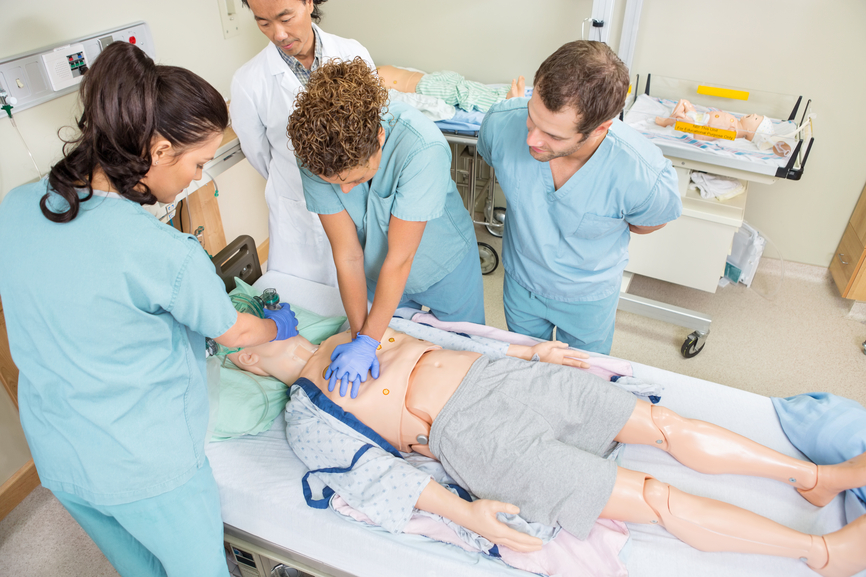Sudden cardiac arrest occurs unexpectedly when the heart suddenly stops beating effectively, leading to a cessation of blood flow to the brain and other vital organs. This life-threatening condition can affect anyone, regardless of age or health status. Rapid response in such situations is crucial; the longer a person goes without effective treatment, the lower their chances of survival become. Defibrillation, a key component of emergency response, plays a pivotal role in the management of cardiac arrest, and understanding its significance can mean the difference between life and death.
Understanding Defibrillation
Survival Rates vs. Time to Defibrillation
Defibrillation is a medical procedure that aims to restore a normal heart rhythm by delivering an electrical shock to the heart. The basic mechanism involves the use of a device that sends a high-energy shock to the heart, interrupting the chaotic electrical activity that causes it to stop beating effectively.
There are two primary types of defibrillators: Automated External Defibrillators (AEDs) and manual defibrillators. AEDs are portable, user-friendly devices that can be operated by bystanders with minimal training, making them widely accessible in public settings. In contrast, manual defibrillators are used by trained medical professionals in more controlled environments, such as hospitals, where advanced monitoring and additional interventions can be performed.
The Time Factor
Survival Rates vs. Time to Defibrillation
The time factor is critical when it comes to the effectiveness of defibrillation. Research shows that survival rates decrease significantly with each passing minute after a cardiac arrest. For instance, the chance of survival decreases by about 7-10% for every minute that defibrillation is delayed.
Survival Rates vs. Time to Defibrillation
This highlights the importance of the “chain of survival,” a concept that emphasizes the interconnected steps needed to improve survival outcomes. This chain includes early recognition of cardiac arrest, prompt activation of emergency medical services, early cardiopulmonary resuscitation (CPR), and timely defibrillation. Each link in this chain must be strong to ensure the best chance of survival for the victim.
Implementing Early Defibrillation
Early defibrillation has been shown to substantially increase survival rates in cardiac arrest cases. Studies indicate that when defibrillation occurs within three to five minutes of the cardiac arrest, the likelihood of survival can be as high as 50-70%.
Additionally, early defibrillation significantly reduces the risk of neurological damage, which can occur due to a prolonged lack of blood flow to the brain. The immediate restoration of a normal heart rhythm helps to maintain blood flow to vital organs, minimizing the potential for long-term disabilities and improving overall outcomes for survivors.
Public Access Defibrillation Programs
Implementing early defibrillation involves creating public access defibrillation (PAD) programs that provide AEDs in easily accessible locations, such as airports, schools, shopping malls, and sporting events. These programs are designed to ensure that defibrillators are readily available to bystanders in the event of a cardiac arrest.
Training and Education Initiatives
Training and education initiatives are also essential to maximize the effectiveness of these programs. Teaching community members how to recognize cardiac arrest, perform CPR, and use an AED can empower them to act quickly and confidently in emergencies, bridging the gap until professional medical help arrives.
Challenges and Solutions
Despite the critical importance of early defibrillation, several challenges hinder its implementation.
Accessibility Issues
One significant issue is accessibility; many communities lack sufficient AEDs, and those that do may not have them placed in strategic locations. To address this, advocacy for policies that promote the installation of AEDs in public spaces is vital.
Overcoming Fear and Hesitation in Bystanders
Another challenge is overcoming the fear and hesitation that bystanders may experience when confronted with a cardiac arrest situation. Many people feel unsure about using an AED or fear doing more harm than good. Community training programs can help alleviate these concerns by providing hands-on practice and education, ensuring that individuals feel prepared to respond effectively.
Conclusion
In conclusion, early defibrillation is a critical factor in saving lives during cardiac emergencies. When combined with effective CPR, defibrillation significantly improves the chances of survival for victims of sudden cardiac arrest. Quick action and access to an automated external defibrillator (AED) can mean the difference between life and death, making it essential for both healthcare providers and bystanders to understand and be comfortable with its use.
To be fully prepared for such life-threatening situations, obtaining CPR certification in St. Louis is essential. At CPR St. Louis, you’ll receive comprehensive, hands-on training that covers not only CPR but also the use of AEDs and other critical life-saving techniques. With courses in BLS, ACLS, PALS, and First Aid, CPR St. Louis ensures that you gain the skills and confidence necessary to act quickly and effectively in an emergency.
Don’t wait until it’s too late—equip yourself with the knowledge and certification that could save a life. Enroll in CPR certification St. Louis today and become a vital part of your community’s emergency response network!






